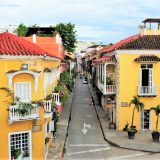8 Best Things To Do on a Stopover in Santa Marta
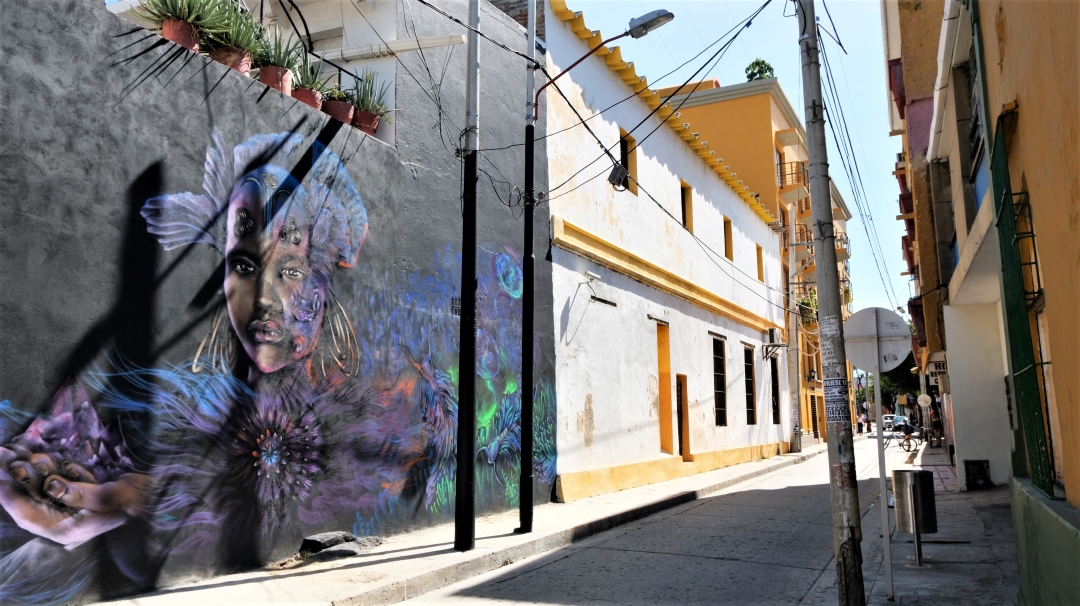
After our incredible weekend hiking in Tayrona National Park, like many tourists we hopped out into Santa Marta and based ourselves in the town for a few nights.
Santa Marta is the next logical stop along the coast from Cartagena. It’s the gateway to Colombia’s north and the Caribbean coast where travellers can access the jungle/beach paradise of Tayrona National Park, the lush mountain town of Minca, and the backpacker beach of Palomino.
To be completely honest, you probably won’t like Santa Marta that much. We certainly weren’t enamoured with it, but we did find some bits that we liked. Santa Marta is the oldest town in Colombia, but by most counts it’s overshadowed by the more glamorous Cartagena (which we loved!)
It’s a port city, a bit sketchy around the edges so you will spend a lot of time with your backpack on the front of your belly. That said, we didn’t face any trouble there though we weren’t out too late and were careful not to stroll too far from the old town. Freshly painted murals and street art are going up on walls around the old town as part of some much-needed gentrification.
If you do find yourself breaking up your journey along the Caribbean coast with a stop in Santa Marta, don’t despair! Though Santa Marta wasn’t a remarkable place and we wouldn’t really recommend more than an overnight stop there, there’s a small collection of worthwhile hotels and restaurants clustered around Santa Marta’s old town and a cracking Gold Museum (I’m not joking).
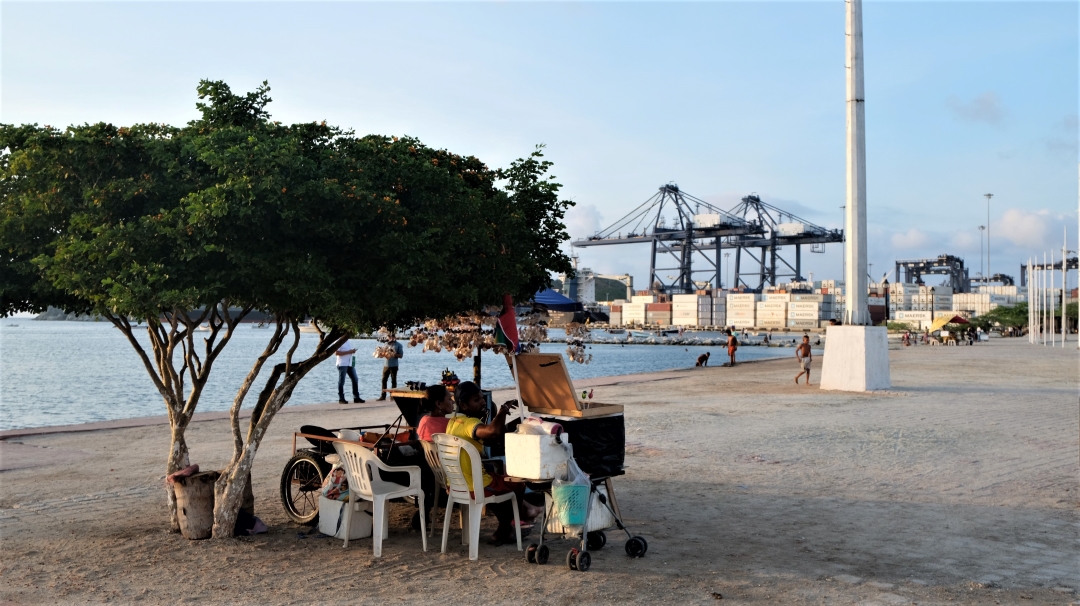
Best Things to Do in Santa Marta
Santa Marta isn’t flooded with things to do, but there are some activities we’d recommend for anyone stopping by:
Walk the Malecon at Sunset
Santa Marta’s boardwalk makes for a beautiful sunset, even despite the industrial landscape at one end. Walk towards the other end and there’s a small slab of beach. In the evening, kids jump in the waters and swim — though I wouldn’t be too confident about the water cleanliness. There’s a lively vibe in the early evenings, but don’t dawdle around too late into the night.
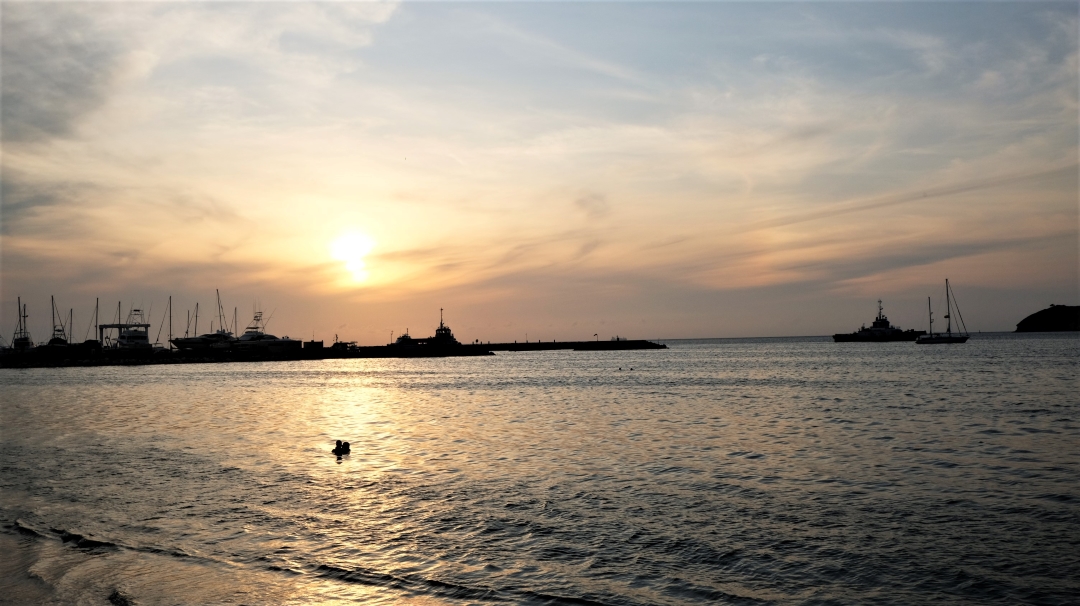
Stop By Parque de los Novios
Parque de los Novios is the nicest plaza in Santa Marta’s old town. Here you’ll find the Palace of Justice to one side and nice restaurants and bars to the other. Locals and tourists both hang out here.
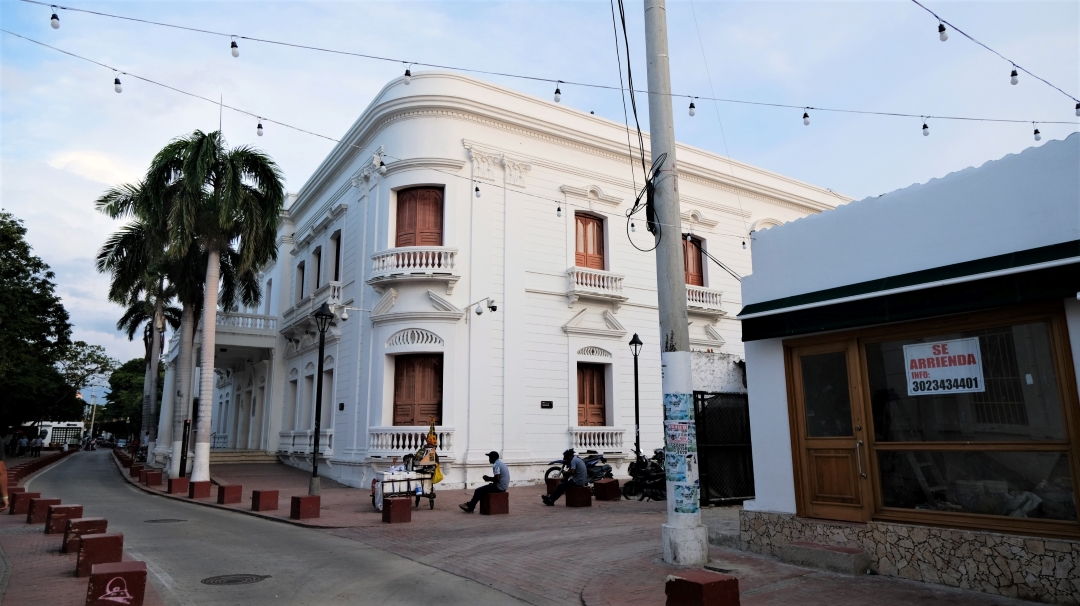
Go Street Art Spotting
Street art and murals are being painted on walls around the old town as Santa Marta tries to rejuvenate the area. The street art is some of the best we’ve seen in Colombia.
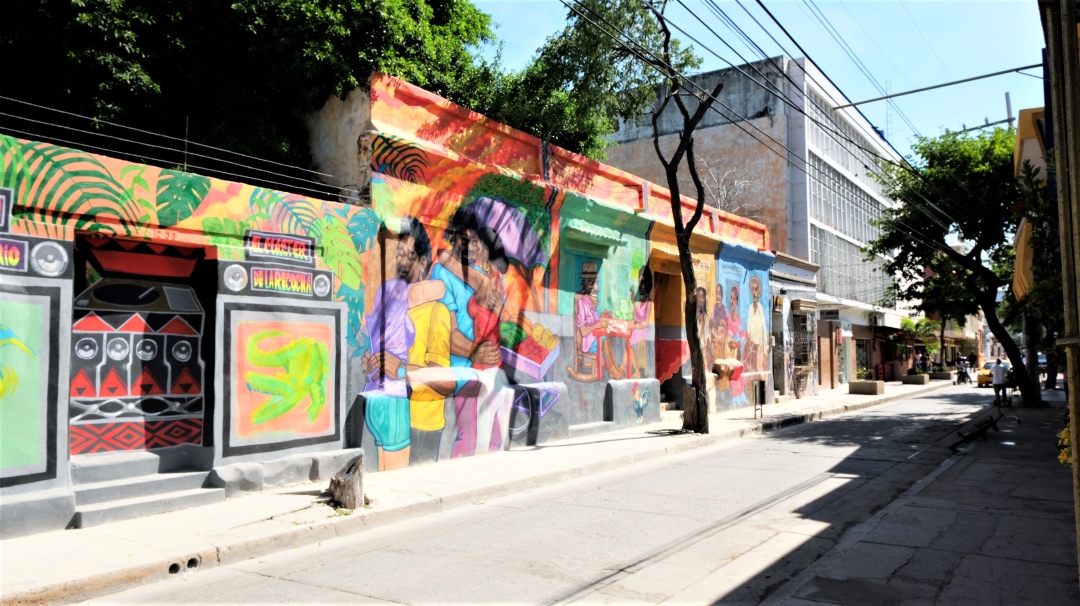
Visit the Hacienda where Simon Bolivar died
Simon Bolivar, the man who led Colombia’s fight for independence from Spain, died penniless in Santa Marta. You can visit the hacienda where he died, Quinta de San Pedro Alejandrino, and see several items owned by Colombia’s founding father. There’s also a monument to “el libertador” as well as an art museum and a botanical garden that is crawling with iguanas. Entry is COP $22,000. A taxi from the old town to the quinta should cost COP $7000 – 10,000.

See the Gold Museum (Casa de la Aduana)
Santa Marta’s gold museum (Museo de Oro Tairona) is free to enter and is a surprisingly good little museum. The first floor is dedicated to gold objects created by the local indigenous peoples. The second floor contains exhibits on Santa Marta’s history. The house itself is a beautiful building with a couple of accessible balconies overlooking the Parque Bolivar.
Take a Trip to Tayrona National Park
Don’t miss the best beaches and jungle hikes in Colombia. Santa Marta is the main town for travellers planning a jungle escape to Tayrona due to it’s close proximity. It’s only an hour away to the park, so you can make it in a day but we’d recommend an overnight in a jungle cabin or a beach-side hammock to make the most of the trip. Our recommendations and how we organised our trip to Tayrona are detailed in our Tayrona National Park travel guide.

Head Up to the Mountain Town of Minca
Tight on time and keen to head to the cool climate in the south of Colombia, we didn’t make it to Minca. We heard from friends this mountain town is a rainforest paradise for waterfall treks, bird spotting and some peace and quiet.
Read Next: 10 Things You’ll Love To Do in Cartagena, Colombia
Where to Eat in Santa Marta
The last on our list of things to do in Santa Marta but one of our favourite: indulge in the great vegetarian restaurants here. We didn’t expect Santa Marta to have not one, let alone two good vegetarian restaurants! Considering Colombia’s preference for meat dishes and deep-fried food, this was a treat.
Bistroveg by Ouzo — This vegetarian restaurant serves both locally-inspired vegetarian dishes as well as international dishes. We tried the arroz chaufa (a Peruvian fried rice dish) and the Cacciatore (a Colombian dish of mashed potato with aubergine stew). Both were excellent and reasonably priced. We also had iced coffee with almond milk and Charlie sneaked off one morning for a bowl of coconut granola. The restaurant has air con, which you’ll appreciate if you’ve experienced Santa Marta’s midday heat!
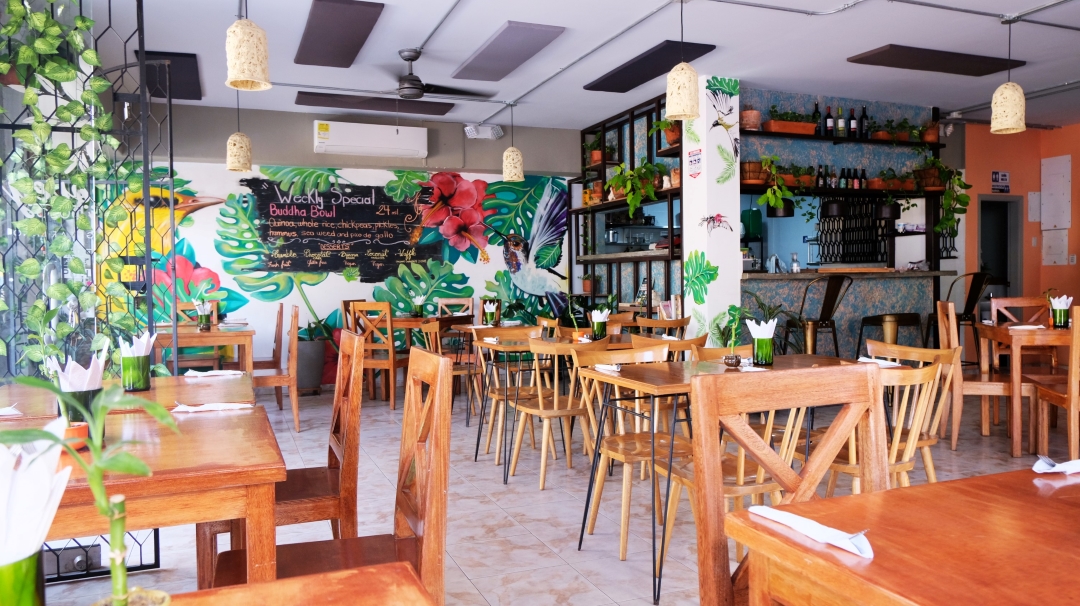
Ikaro Cafe—Ikaro Cafe is a vegetarian restaurant and cafe with a focus on sustainable eating and ethical supply chains. Most of the produce is grown locally and their coffee is grown on their own farm and roasted in the coffee shop. You can try international options like an African chickpea curry with yams or banana, almond milk and date smoothies and plenty of fresh salads.
Ikaro has a nice ambience and it also sells health products that can be tricky to find in Colombia, such as freshly baked sourdough bread, almond butter and homemade granola. It’s slightly expensive — we paid around COP $35,000 per person for a meal and a drink.
Entre Cuates, Santa Marta — Entre Cuates is a cute Mexican restaurant just off the old town square (Parque de los Novios). All of the usual Mexican options are available, including tacos, quesadillas and chilaquiles. We ate here on Halloween as the Mexican-style skills seemed appropriate! There’s a fair-sized vegetarian and vegan section on the menu. Mains cost between COP $20,000 – 25,000.
Is Santa Marta Safe?
Santa Marta doesn’t have the safest feeling about it, and certainly not when you compare it to Cartagena. We felt that Santa Marta was seedy in places, particularly the streets around the market or anywhere too far out of the historical centre. Nothing bad happened to us in Santa Marta, but we paid extra attention to our valuables and were careful not to go wandering around too late at night.
There are many Venezuelan refugees in the city and many of them are in desperate situations. You’ll be asked for money frequently during your time in Santa Marta, usually in exchange for sweets or something similar. We found those asking for money to be friendly and we’d often give COP $1000 if we had change.
Getting In and Out of Santa Marta
Santa Marta Airport — Santa Marta has a small airport which has international flights and flights to other cities in Colombia including Medellin and Bogota. A taxi to the airport from the old town (centro historico) is around COP $25,000. The price isn’t fixed, so you should make an agreement with your driver. The airport is served by Latam and Viva Air. If you fly Viva, be aware of hidden charges such as a fee to print your boarding pass and strict baggage sizes.
Cartagena — Many tourists travel from Santa Marta to Cartagena via minibus. Minibuses run all day from the Berlinas Bus Station. You don’t need to book ahead as the buses run every thirty minutes or so. We paid COP $44,000 per ticket from Cartagena to Santa Marta. The journey took four and a half hours.
Tayrona National Park — It’s possible to visit Tayrona as a day trip from Santa Marta, but we’d recommend staying closer to the park. A bus from Santa Marta to Tayrona is COP $7000 and takes roughly an hour. Buses go from the public market in Santa Marta. You can get a taxi directly to Tayrona for COP $50,000 (if you haggle well!) If you’re not good at haggling, you might pay COP $120,000 for a taxi.
Minca — Shared taxis and collectivos run regularly from Carrera 9 near Santa Marta’s public market. The journey takes about 45 minutes and you should expect to pay COP $8000 per person if you’re in a shared cab.
Read Next: 15 Amazing Things To Do in Medellin

